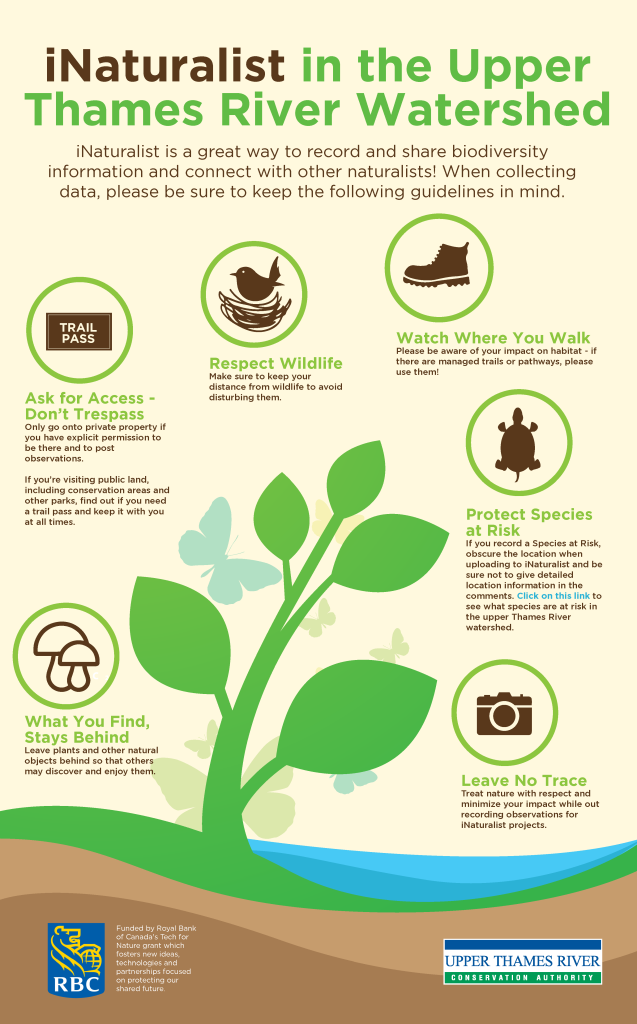2.3 Trail Etiquette
When exploring natural areas, it is important to practice proper trail etiquette to avoid harming species or habitats.

Image Text
iNaturalist is a great way to record and share biodiversity information and connect with other naturalists! When collecting data, please be sure to keep the following guidelines in mind.
Ask for Access – Don’t Trespass
Only go into private property if you have explicit permission to be there and to post observations.
If you’re visiting public land, including conservation areas and other parks, find out if you need a trail pass and keep it with you at all times.
Respect Wildlife
Make sure to keep your distance from wildlife to avoid disturbing them.
Watch Where You Walk
Please be aware of your impact on habitat – if there are managed trails or pathways, please use them!
Protect Species at Risk
If you record a Species at Risk, obscure the location when uploading to iNaturalist, and be sure not to provide detailed location information in the comments. The UTRCA maintains a list of species at risk in the upper Thames River watershed.
What You Find Stays Behind
Leave plants and other natural objects behind so that others may discover and enjoy them.
Leave No Trace
Treat nature with respect and minimize your impact while out recording observations for iNaturalist projects.
For further information on proper etiquette while exploring nature, consult The Seven Principles of Leave No Trace guide from Leave No Trace Canada.

